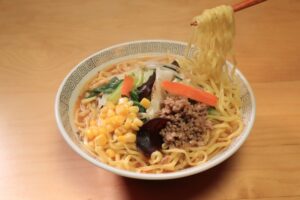A Comprehensive Guide to Enjoying Ramen in Japan: A Must-Try Experience for Foreign Tourists

When visiting Japan, savoring authentic ramen is more than just a meal—it’s an experience. This iconic Japanese dish offers a cultural journey through its rich flavors and countless variations. Whether you’re a foodie or a casual traveler, understanding the history and nuances of ramen can enrich your visit to Japan. Here’s an in-depth guide to enjoying ramen like a pro during your stay.
The Deep History of Ramen

The journey of ramen becoming a national dish in Japan is as rich as its broth. Originally inspired by Chinese wheat noodle dishes, ramen gained popularity in Japanese port cities like Yokohama and Kobe in the late 19th century. The first recorded mention of “Nankin Soba” in Tokyo—an early version of ramen—dates back to around 1910, forming the foundation of modern ramen.
After World War II, ramen evolved from a niche dish to a national staple. Key factors included the widespread availability of affordable wheat flour imported from the U.S., the demand for hearty meals during difficult economic times, and Japan’s urbanization. Mobile food carts, or “yatai,” became a popular way to serve warm bowls of ramen to workers.
In 1958, the invention of instant ramen by Momofuku Ando revolutionized ramen’s accessibility, setting the stage for its global fame. Today, ramen ranges from Michelin-starred establishments to instant noodle cups, transcending its humble origins to become a global culinary icon.
What Makes Ramen?

Ramen is not just a noodle dish; it’s a symphony of perfectly balanced components:
- Noodles: Made from wheat flour, with “kansui” (alkaline water) giving them their signature chewy texture and golden hue.
- Broth: The soul of ramen, simmered for hours—or even days—to create deep, complex flavors.
- Toppings: From tender chashu pork and creamy soft-boiled eggs to crunchy bamboo shoots and savory nori seaweed, toppings enhance the dish.
Ramen Varieties to Try
Beyond the classics, Japan boasts countless unique ramen styles:
- Abura Soba: A soup-less “oil noodle” dish mixed with flavorful oils and sauces for a new twist.
- Jiro-kei Ramen: Known for its large portions, rich broth, and abundant toppings.
- Kitsune Ramen: Topped with sweet simmered fried tofu, a regional favorite in Kansai.
Regional Ramen Highlights

1. Tokyo
Try shoyu ramen in Ogikubo or the famed tsukemen (dipping noodles) at Rokurinsha.
2. Hokkaido
The birthplace of miso ramen. Warm up in Sapporo with a rich bowl topped with butter and corn.
3. Fukuoka
Home to creamy tonkotsu broth and thin noodles. Don’t miss “kaedama” (noodle refills).
4. Tohoku
Kitakata ramen features a soy-based broth and thick, chewy noodles, offering a comforting taste.
5. Shikoku
Tokushima ramen stands out with its pork bone soy sauce broth topped with a raw egg.
Tips for Travelers

For Dietary Restrictions
Research vegetarian or allergy-friendly ramen shops in advance, or ask the staff. Chains like Afuri offer vegan options.Learn Basic Japanese Terms
Phrases like “men kata” (firm noodles) or “soup wari” (lighter broth) can help customize your order.Take Home a Ramen Kit
Purchase ramen kits from famous shops to recreate authentic flavors at home.
The Cultural Significance of Ramen

Ramen symbolizes Japan’s adaptability and creativity. While its origins are foreign, ramen has evolved to reflect regional diversity and innovation, becoming uniquely Japanese. Each bowl is a testament to local ingredients, historical influences, and the passion of ramen chefs.
Conclusion

Ramen is more than just food—it’s an adventure into Japan’s culture, history, and flavors. Whether you’re slurping noodles in a bustling Tokyo shop or enjoying miso ramen in snowy Hokkaido, ramen provides unforgettable experiences for travelers. So, grab your chopsticks and dive into the delicious world of ramen!
